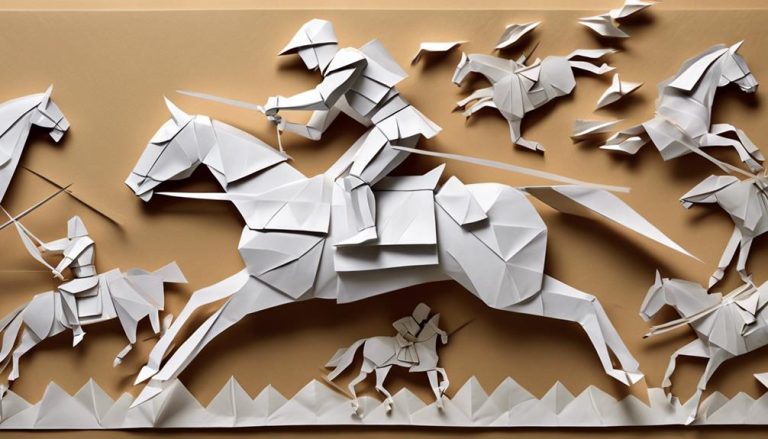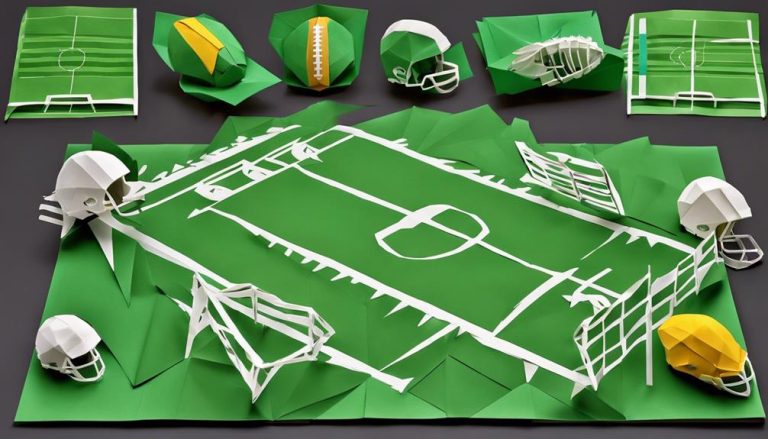General Rules of Triple Jump
When it comes to the triple jump, precision meets power. You may think that it's just about leaping far, but there's a lot more to it than meets the eye.
Understanding the nuances of the takeoff techniques and mastering the phases of the jump can make all the difference in your performance.
But wait, there's more that you need to know to ensure your jumps are not only valid but also competitive.
Stay tuned to discover the essential rules that govern the thrilling world of triple jump.
Takeoff Techniques
When preparing to execute the triple jump, mastering the takeoff techniques is essential for achieving optimal performance. Proper takeoff mechanics lay the foundation for a successful jump that maximizes distance and minimizes the risk of injury. To enhance your takeoff, focus on landing mechanics and injury prevention strategies.
Effective landing mechanics involve maintaining a slight forward lean as you approach the takeoff board. This lean helps convert your horizontal speed into vertical lift. As you make contact with the board, ensure that your foot strikes it at the optimal angle to propel you forward efficiently. Engage your core and drive your arms forcefully to generate power for the jump. Additionally, practicing proper landing techniques during training can help reduce the impact on your joints and lower the risk of injuries.
Speed development is crucial for a powerful takeoff. Work on improving your acceleration and top speed through sprint drills and interval training. Plyometric exercises, such as bounding and box jumps, can also aid in developing explosive strength necessary for the takeoff phase. By incorporating these speed-enhancing techniques into your training regimen, you can boost your performance in the triple jump.
Phases of the Jump
To excel in the triple jump, understanding the phases of the jump is crucial for optimizing your performance and achieving your desired distance goals. As you progress through each phase, focus on perfecting your landing mechanics and technique, while also maximizing power generation and maintaining speed.
Here's a breakdown of the phases:
- Hop: This initial phase sets the tone for the rest of your jump. Focus on exploding off the takeoff board with power and precision. Maintain a strong core and proper body alignment to ensure a smooth transition to the next phase.
- Step: As you transition from the hop to the step, work on driving your non-takeoff knee up and forward while extending the takeoff leg back. This phase requires proper timing and coordination to set yourself up for a successful jump.
- Jump: The final phase is where you bring everything together. Generate maximum power as you extend your body forward, driving your arms and legs to propel yourself further. Focus on speed maintenance through the jump to carry your momentum.
- Landing: The landing is critical in the triple jump. Practice absorbing the impact efficiently by bending your knees upon contact with the sandpit. Emphasize proper foot placement and balance to avoid fouls and maximize your distance.
Mastering these phases won't only improve your overall performance but also help you achieve your triple jump goals effectively.
Fouls and Disqualifications
Understanding the rules regarding fouls and disqualifications is essential for any triple jumper aiming to compete successfully in the event. Common fouls in triple jump include overstepping the takeoff board, stepping on or beyond the line at the end of the jump, and failing to perform the phases of the jump correctly. Overstepping the board occurs when a jumper's foot extends beyond the edge of the board during takeoff, leading to a foul. Stepping on or over the line at the end of the jump results in a foul as well. These mistakes can cost valuable points or even lead to disqualification from the event.
Potential disqualifications in triple jump can occur if an athlete commits multiple fouls or violates specific rules set by the competition. Consistent fouls throughout the event can lead to disqualification, as they demonstrate a lack of adherence to the regulations governing the triple jump. Additionally, intentional rule violations, such as unsportsmanlike conduct or attempting to gain an unfair advantage, can result in disqualification from the competition.
As a triple jumper, it's crucial to familiarize yourself with the common fouls and potential disqualifications to ensure a successful and fair participation in the event. By understanding and following the rules carefully, you can avoid costly mistakes and compete with integrity and sportsmanship.
Measurement and Scoring
Having a solid understanding of the rules and potential fouls in triple jump sets the foundation for comprehending how measurements and scoring are conducted in this event. In triple jump, accuracy in measuring distances and a fair scoring system are crucial to determine the success of each athlete's performance.
Here are some key points to consider regarding measurement and scoring in triple jump:
- Distance accuracy: To ensure fairness, the distance jumped by the athlete is measured from the takeoff line to the nearest mark left by any part of the body (usually the foot) during the jump sequence. This precise measurement helps in determining the validity of the jump.
- Scoring system: Triple jump follows a scoring system where each valid jump is measured, and the best jump of the athlete is taken into account for scoring. This system rewards consistency and excellence in performance.
- Jumping techniques: Proper jumping techniques not only impact the distance covered but also play a significant role in how the jump is measured. Athletes must focus on mastering the hop, step, and jump sequence to maximize their performance.
- World records: The measurement of world record jumps in triple jump is meticulously scrutinized for accuracy to ensure that new records are legitimate and reflect the incredible achievements of the athletes.
Understanding the intricacies of measurement and scoring in triple jump provides athletes with the knowledge needed to excel in this challenging event.
Equipment and Attire
When preparing for the triple jump event, selecting the appropriate equipment and wearing suitable attire are essential factors that can significantly impact your performance. Proper footwear is crucial for the triple jump as it provides the necessary support and traction for each phase of the jump. Choose shoes specifically designed for jumping events with good cushioning and a firm heel counter to help with the take-off and landing. The shoes should also have a wide base to enhance stability during the hop, step, and jump sequence.
In addition to proper footwear, wearing the right athletic clothing is key to performing your best in the triple jump. Opt for moisture-wicking materials that keep you dry and comfortable throughout the event. A fitted top and bottoms will reduce drag and ensure freedom of movement during each phase of the jump. Consider wearing compression gear to support your muscles and improve circulation, aiding in performance and recovery.
Remember that the right equipment and attire not only enhance your performance but also reduce the risk of injury. By investing in quality footwear and choosing appropriate athletic clothing, you set yourself up for success in the triple jump. So, make sure you're well-equipped and dressed for the occasion to unleash your full potential in this dynamic event.
Frequently Asked Questions
What Are Some Common Training Drills to Improve Triple Jump Performance?
To enhance your triple jump skills, try incorporating plyometric exercises like bounding and box jumps to boost explosive power. Additionally, focus on strength training for your legs and core to improve stability and drive.
How Can Athletes Prevent Injuries While Training for the Triple Jump?
To prevent injuries while training for the triple jump, focus on proper form and technique. Prioritize recovery through stretching, rest, and proper nutrition. By being mindful of these aspects, you can minimize the risk of getting hurt.
Are There Any Specific Nutrition Guidelines for Triple Jump Athletes?
To fuel your triple jump success, focus on proper hydration and meal timing. Consider ideal supplements and recovery strategies to optimize performance. Your nutrition choices play a crucial role in supporting your training and overall well-being.
What Are Some Mental Strategies to Help Stay Focused During Competition?
To stay focused during competition, try visualization techniques and positive affirmations. Mental toughness is key. Remember, breathing exercises can calm nerves. An interesting stat: 80% of successful athletes use mental strategies for peak performance.
How Can Athletes Improve Their Speed and Power for Better Triple Jump Results?
To boost your speed and power for triple jump success, focus on strength training and plyometric exercises. Build a strong foundation through squats, lunges, and explosive jumps. Consistent effort will elevate your performance.






